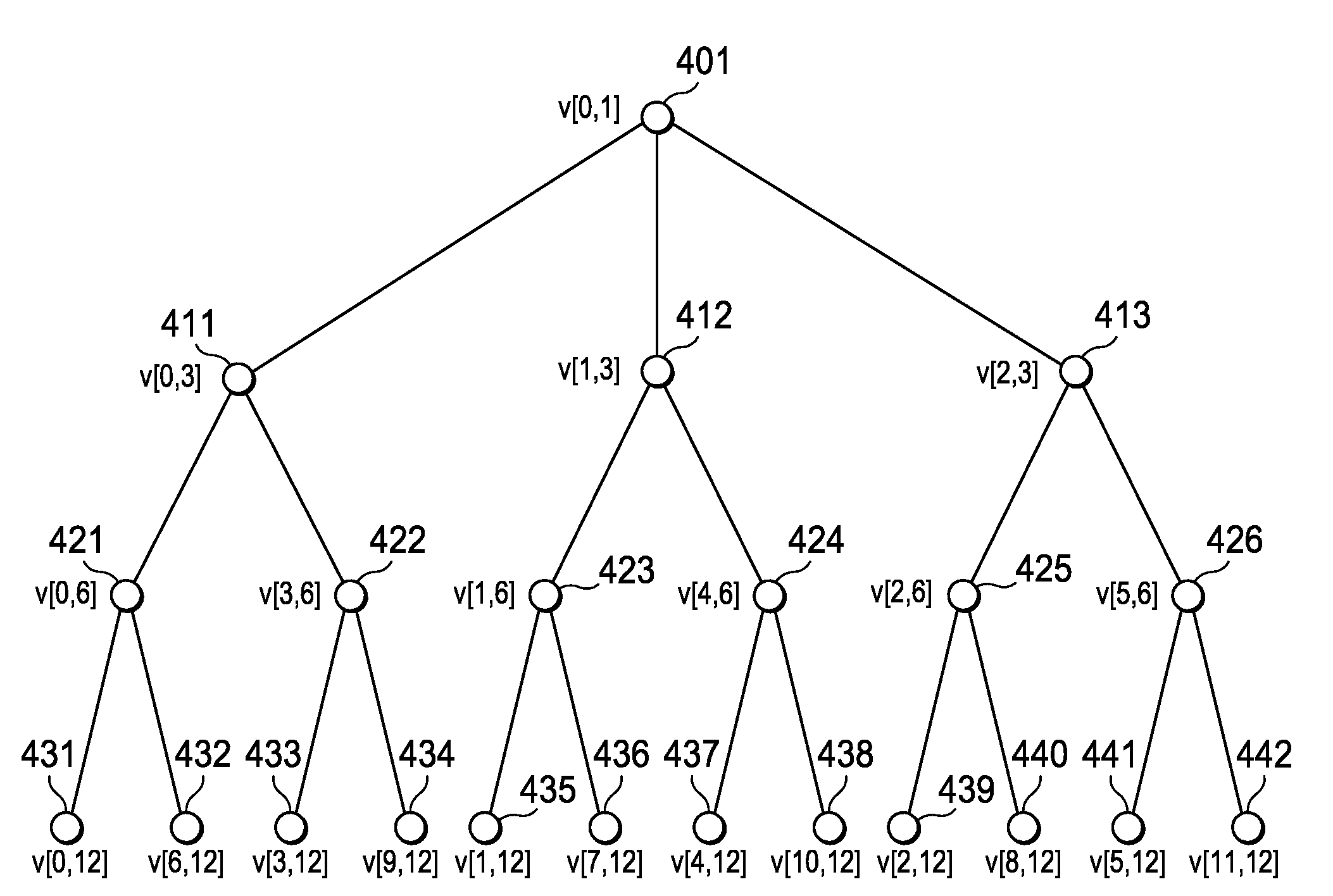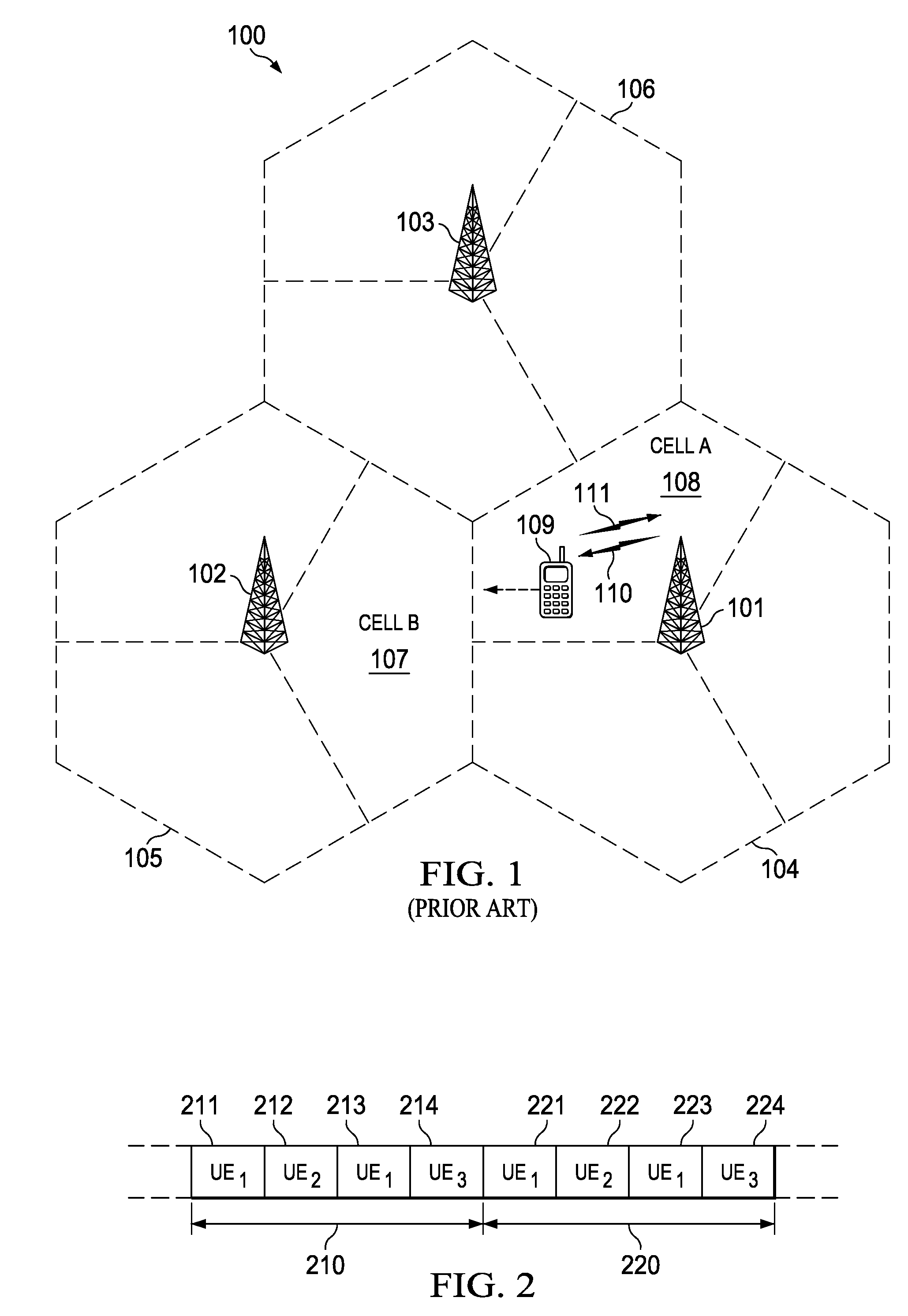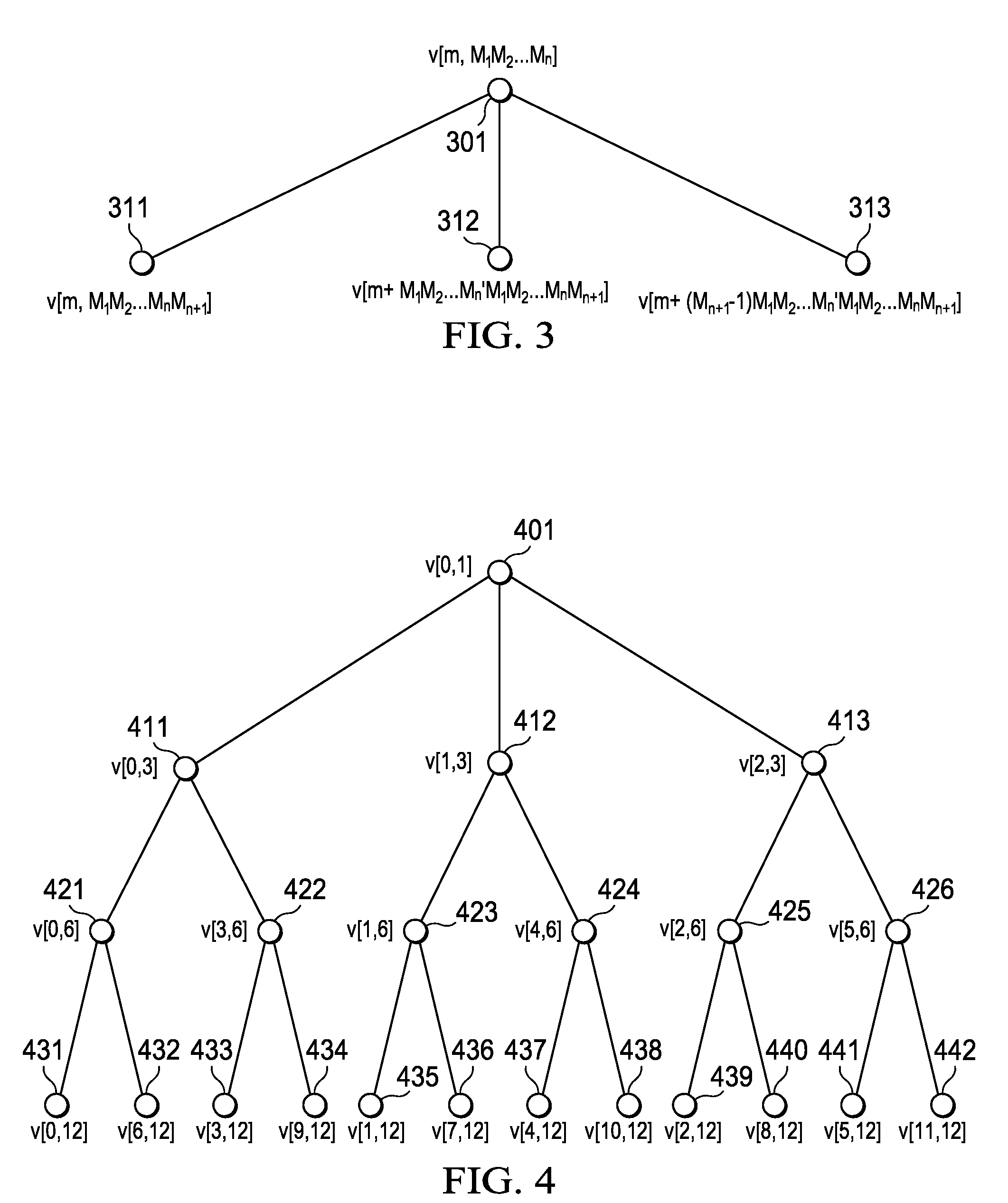Time-Sharing of Sounding Resources
a sounding resource and time-sharing technology, applied in the field of wireless communication, can solve the problem of no flexibility in tailoring the sounding period to individual velocities of ues, and achieve the effect of more flexibility
- Summary
- Abstract
- Description
- Claims
- Application Information
AI Technical Summary
Benefits of technology
Problems solved by technology
Method used
Image
Examples
Embodiment Construction
[0012]FIG. 1 shows an exemplary wireless telecommunications network 100. The illustrative telecommunications network includes base stations 101, 102 and 103, though in operation, a telecommunications network necessarily includes many more base stations. Each of base stations 101, 102 and 103 are operable over corresponding coverage areas 104, 105 and 106. Each base station's coverage area is further divided into cells. In the illustrated network, each base station's coverage area is divided into three cells. Handset or other user equipment (UE) 109 is shown in Cell A 108. Cell A 108 is within coverage area 104 of base station 101. Base station 101 transmits to and receives transmissions from UE 109. As UE 109 moves out of Cell A 108 and into Cell B 107, UE 109 may be handed over to base station 102. Because UE 109 is synchronized with base station 101, UE 109 can employ non-synchronized random access to initiate handover to base station 102.
[0013]Non-synchronized UE 109 also employs...
PUM
 Login to View More
Login to View More Abstract
Description
Claims
Application Information
 Login to View More
Login to View More - R&D
- Intellectual Property
- Life Sciences
- Materials
- Tech Scout
- Unparalleled Data Quality
- Higher Quality Content
- 60% Fewer Hallucinations
Browse by: Latest US Patents, China's latest patents, Technical Efficacy Thesaurus, Application Domain, Technology Topic, Popular Technical Reports.
© 2025 PatSnap. All rights reserved.Legal|Privacy policy|Modern Slavery Act Transparency Statement|Sitemap|About US| Contact US: help@patsnap.com



